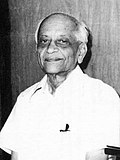17–21 February 1967 | |||||||||||||||||||||||||||||||||||||||||||||||||||||||||||||||||
520 of the 523 seats in the Lok Sabha [a] 261 seats needed for a majority | |||||||||||||||||||||||||||||||||||||||||||||||||||||||||||||||||
|---|---|---|---|---|---|---|---|---|---|---|---|---|---|---|---|---|---|---|---|---|---|---|---|---|---|---|---|---|---|---|---|---|---|---|---|---|---|---|---|---|---|---|---|---|---|---|---|---|---|---|---|---|---|---|---|---|---|---|---|---|---|---|---|---|---|
| Registered | 250,207,401 | ||||||||||||||||||||||||||||||||||||||||||||||||||||||||||||||||
| Turnout | 61.04% ( | ||||||||||||||||||||||||||||||||||||||||||||||||||||||||||||||||
| |||||||||||||||||||||||||||||||||||||||||||||||||||||||||||||||||
 Results by constituency | |||||||||||||||||||||||||||||||||||||||||||||||||||||||||||||||||
| |||||||||||||||||||||||||||||||||||||||||||||||||||||||||||||||||
General elections were held in India between 17 and 21 February 1967 to elect 520 of the 523 members of the fourth Lok Sabha, an increase of 15 from the previous session of Lok Sabha. [1] Elections to State Assemblies were also held simultaneously, the last general election to do so.
Contents
The incumbent Indian National Congress government retained power, albeit with a significantly reduced majority. Indira Gandhi was resworn in as the Prime Minister on 13 March.




